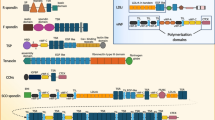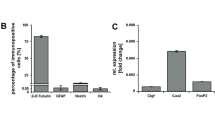Abstract
SCO-spondin is a newly identified protein, strongly expressed in the subcommissural organ (SCO), an ependymal differentiation of the brain. When secreted into the cerebrospinal fluid at the entrance to the Sylvian aqueduct, it condenses and forms Reissner’s fiber. Several conserved domains have previously been characterized
in SCO-spondin, e.g., thrombospondin type 1 repeats (TSRs), low-density lipoprotein receptor (LDLr) type A repeats, and epidermal-growth-factor-like domains, which are potent sites of protein-protein interaction. To clarify the role of this protein on neuronal development, we have tested the effect of oligopeptides, the sequences of which include highly conserved amino acids of TSRs, LDLr type A repeats and a potent site of attachment to proteoglycan, on cortical and spinal-cord neurons in primary cell cultures. One of these peptides (WSGWSSCSRSCG), corresponding to a SCO-spondin TSR sequence, markedly increases adhesivity and neuritic outgrowth of cortical neurons and induces an opposite effect on cortical and spinal-cord neuronal aggregation. These effects are specific, as no response is observed with the scrambled sequence of this peptide. Another peptide (WGPCSVSCG) is only slightly active on adhesivity and neuritic outgrowth of cortical neurons and has no effect on spinal-cord neurons. Peptides derived from other conserved domains of SCO-spondin are not effective under our experimental conditions. Thus, SCO-spondin may be responsible for at least a part of the effects previously observed on neuronal cells cultured in the presence of Reissner’s fiber. In addition, SCO-spondin seems to interfere with neuronal development and/or axonal guidance during ontogenesis of the central nervous system in modulating side-to-side interactions and neuritic outgrowth.
Similar content being viewed by others
Author information
Authors and Affiliations
Additional information
Received: 17 February 1998 / Accepted: 24 March 1998
Rights and permissions
About this article
Cite this article
Monnerie, H., Dastugue, B. & Meiniel, A. Effect of synthetic peptides derived from SCO-spondin conserved domains on chick cortical and spinal-cord neurons in cell cultures. Cell Tissue Res 293, 407–418 (1998). https://doi.org/10.1007/s004410051132
Issue Date:
DOI: https://doi.org/10.1007/s004410051132




